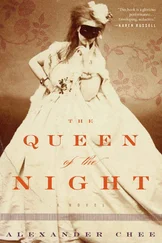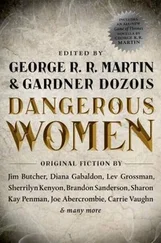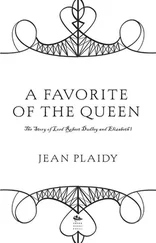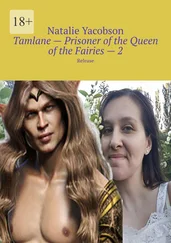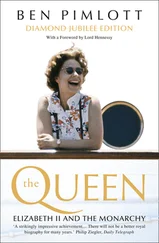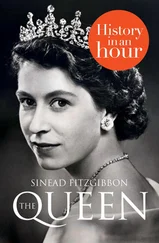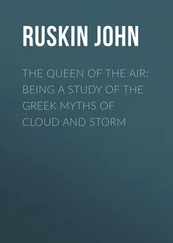The abdication crisis threw the family into turmoil, not only because it was a scandal but because it was antithetical to all the rules of succession. While Elizabeth’s father had been known as “Bertie” (for Albert), he chose to be called George VI to send a message of stability and continuity with his father. (His wife, who was crowned by his side, would be known as Queen Elizabeth.) But Bertie had not been groomed for the role. He was in tears when he talked to his mother about his new responsibilities. “I never wanted this to happen,” he told his cousin Lord Louis “Dickie” Mountbatten. “I’ve never even seen a State Paper. I’m only a Naval Officer, it’s the only thing I know about.” The new King was reserved by nature, somewhat frail physically, and plagued by anxiety. He suffered from a severe stammer that led to frequent frustration, culminating in explosions of temper known as “gnashes.”
Yet he was profoundly dutiful, and he doggedly set about his kingly tasks while ensuring that his little Lilibet—her name within the family—would be ready to succeed him in ways he had not been. On his accession she became “heiress presumptive,” rather than “heiress apparent,” on the off chance that her parents could produce a son. But Elizabeth and Margaret Rose had been born by cesarean section, and in those days a third operation would have been considered too risky for their mother. According to custom, Lilibet would publicly refer to her mother and father as “the King and Queen,” but privately they were still Mummy and Papa.
When Helen Mirren was studying for her role in 2006’s The Queen , she watched a twenty-second piece of film repeatedly because she found it so revealing. “It was when the Queen was eleven or twelve,” Mirren recalled, “and she got out of one of those huge black cars. There were big men waiting for her, and she extended her hand with a look of gravity and duty. She was doing what she thought she had to do, and she was doing it beautifully.”
“I have a feeling that in the end probably that training is the answer to a great many things,” the Queen said on the eve of her fortieth year as monarch. “You can do a lot if you are properly trained, and I hope I have been.” Her formal education was spotty by today’s standards. Women of her class and generation were typically schooled at home, with greater emphasis on the practical than the academic. “It was unheard of for girls to go to university unless they were very intellectual,” said Lilibet’s cousin Patricia Mountbatten. While Crawfie capably taught history, geography, grammar, literature, poetry, and composition, she was “hopeless at math,” said Mary Clayton, who had also been taught by Crawfie. Additional governesses were brought in for instruction in music, dancing, and French.
Elizabeth was not expected to excel, much less to be intellectual. She had no classmates against whom to measure her progress, nor batteries of challenging examinations. Her father’s only injunction to Crawfie when she joined the household in 1932 had been to teach his daughters, then six and two, “to write a decent hand.” Elizabeth developed flowing and clear handwriting similar to that of her mother and sister, although with a bolder flourish. But Crawfie felt a larger need to fill her charge with knowledge “as fast as I can pour it in.” She introduced Lilibet to the Children’s Newspaper , a current events chronicle that laid the groundwork for following political news in The Times and on BBC radio, prompting one Palace adviser to observe that at seventeen the princess had “a first-rate knowledge of state and current affairs.”
Throughout her girlhood, Elizabeth had time blocked out each day for “silent reading” of books by Stevenson, Austen, Kipling, the Brontës, Tennyson, Scott, Dickens, Trollope, and others in the standard canon. Her preference, then and as an adult, was for historical fiction, particularly about “the corners of the Commonwealth and the people who live there,” said Mark Collins, director of the Commonwealth Foundation. Decades later, when she conferred an honor on J. K. Rowling for her Harry Potter series, the Queen told the author that her extensive reading in childhood “stood me in good stead because I read quite quickly now. I have to read a lot.”
Once she became first in line to the throne, Elizabeth’s curriculum intensified and broadened. Her most significant tutor was Sir Henry Marten, the vice provost of Eton College, the venerable boys’ boarding school down the hill from Windsor Castle whose graduates were known as Old Etonians. Marten had coauthored The Groundwork of British History , a standard school textbook, but he was hardly a dry academic. A sixty-six-year-old bachelor with a moon face and gleaming pate, he habitually chewed a corner of his handkerchief and kept a pet raven in a study so heaped with books that Crawfie likened them to stalagmites. Sir Alec Douglas-Home, who would serve as Queen Elizabeth II’s fourth prime minister, remembered Marten as “a dramatic, racy, enthusiastic teacher” who humanized figures of history.
Beginning in 1939, when Elizabeth was thirteen, she and Crawfie went by carriage to Marten’s study twice a week so she could be instructed in history and the intricacies of the British constitution. The princess was exceedingly shy at first, often glancing imploringly at Crawfie for reassurance. Marten could scarcely look Elizabeth in the eye, and he lapsed into calling her “Gentlemen,” thinking he was with his Eton boys. But before long she felt “entirely at home with him,” recalled Crawfie, and they developed “a rather charming friendship.”
Marten imposed a rigorous curriculum built around the daunting three-volume The Law and Custom of the Constitution by Sir William Anson. Also on her reading list were English Social History by G. M. Trevelyan, Imperial Commonwealth by Lord Elton, and The English Constitution by Walter Bagehot, the gold standard for constitutional interpretation that both her father and grandfather had studied. Marten even included a course on American history. “Hide nothing,” Sir Alan “Tommy” Lascelles, private secretary to King George VI, had told Marten when asked about instructing the princess on the crown’s role in the constitution.
Unlike the written American Constitution, which spells everything out, the British version is an accumulation of laws and unwritten traditions and precedents. It is inherently malleable and dependent on people making judgments, and even revising the rules, as events occur. Anson called it a “somewhat rambling structure … like a house which many successive owners have altered.” The constitutional monarch’s duties and prerogatives are vague. Authority rests more in what the king doesn’t do than what he does. The sovereign is compelled by the constitution to sign all laws passed by Parliament; the concept of a veto is unthinkable, but the possibility remains.
Elizabeth studied Anson for six years, painstakingly underlining and annotating the dense text in pencil. According to biographer Robert Lacey, who examined the faded volumes in the Eton library, she took note of Anson’s assertion that a more complex constitution offers greater guarantees of liberty. In the description of Anglo-Saxon monarchy as “a consultative and tentative absolutism” she underlined “consultative” and “tentative.” Marten schooled her in the process of legislation, and the sweeping nature of Parliament’s power. Elizabeth’s immersion in the “procedural minutiae” was such that, in Lacey’s view, “it was as if she were studying to be Speaker [of the House of Commons], not queen.” Prime ministers would later be impressed by the mastery of constitutional fine points in her unexpectedly probing questions.
Читать дальше

